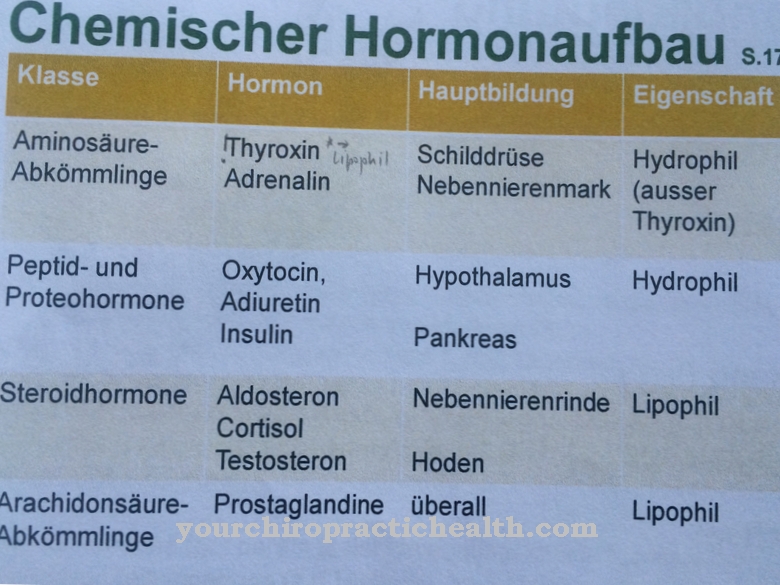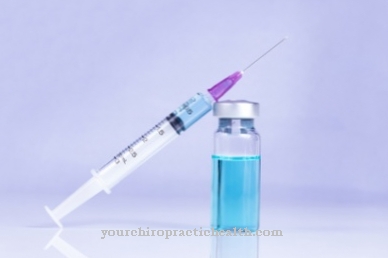The Linoleic acid is a very important fatty acid and vital for the body. Why is linoleic acid, whose name comes from Latin, so important for our body? What tasks does it perform in the organism?
What is linoleic acid?
Linoleic acid is a doubly unsaturated fatty acid. Unsaturated fatty acids are organic-chemical compounds, the molecular structures of which have a double or a triple bond. Linoleic acid has a double bond and belongs to the group of omega fatty acids.
In general, linoleic acid occurs in the liquid state and is very poorly soluble in water. Linoleic acid is mainly found in natural fatty oils. In addition to linoleic acid, there is a conjugated linoleic acid, which belongs to the group of diunsaturated fatty acids of linoleic acid. This conjugated linoleic acid is a solid ingredient in dairy and meat products from ruminants.
Function, effect & tasks
The essential linoleic acid is one of the fatty acids with the greatest importance to health. Linoleic acid must not be confused with gamma-linolenic acid, which affects the human body in a similar way, but whose effects differ in many small details.
If enough linoleic acid is supplied to the body, this has many positive effects on the processes that take place regularly in the body. As a basis for the synthesis of polyunsaturated fatty acids, it is necessary so that these processes can take place without interruption.
Linoleic acid is also responsible for stabilizing the structure of the skin and the structure of the cell membranes. In healthy skin, about 20 percent linoleic acid is found in the fatty acids. The largest proportion of linoleic acid is part of the epidermis, the outermost layer of human skin. A functional water balance in the skin is one of the many important barrier functions of linoleic acid.
Linoleic acid is not only essential for the skin.After intensive training sessions, the muscles of the body are heavily strained. Linoleic acid helps shorten recovery time. Linoleic acid also fulfills an important role in the metabolic process of oxygen. It enables electrical currents to be generated and the heart to beat more regularly. Sufficient linoleic acid supports the body in regulating cholesterol and supports the task that our blood platelets perform. In order to be able to excrete fat-soluble toxins from our body, linoleic acid helps to transport them to the skin, lungs, kidneys or intestines. There these toxins can ultimately be excreted.
Education, occurrence, properties & optimal values
Linoleic acid cannot be produced in the body. Therefore, it is ingested through the food we eat every day. Linoleic acid is contained in animal and vegetable fats. Grape seed oil and safflower oil have the highest linoleic acid content in vegetable oils. Sunflower oil, pumpkin seed oil and olive oil, on the other hand, have a significantly lower proportion of linoleic acid. High-fat meat and sausages as well as margarine, almonds and nuts are also very rich in linoleic acid.
The body should take in between five and seven grams a day through food. With a balanced diet, the daily requirement can be covered without problems. If the person is exposed to major stressful situations or lives according to a certain nutrition plan, an increase in the daily requirement for linoleic acid may be necessary. Dietary supplements such as evening primrose oil, which contains omega-3 and omega-6 fatty acids, can be taken if there is a deficiency.
Especially during pregnancy, pregnant women should make sure that they consume enough linoleic acids to avoid a deficiency. The dietary supplements can also be taken during pregnancy as there are no known side effects.
Diseases & Disorders
Linoleic acid can also have a negative effect on the body. If too large a quantity of omega-6 fatty acids is ingested, the formation of eicosanoids (hormone-like substances that are involved in inflammatory processes in the body, among other things) can be promoted. These tissue hormones can have a positive as well as a negative effect on our body.
If the linoleic acid deficiency is too high, the body is more susceptible to infections and diseases of the heart. Liver weakness and kidney weakness can also be the result of an insufficient supply of linoleic acid. It is rather rare that such serious consequences occur. A strong oversupply of linoleic acid can, among other things, increase the risk of a stroke. In some cases, too much linoleic acid in the body can also be carcinogenic.
Linoleic acid not only fulfills many positive functions in our body. It is also a component of many cosmetic products that are used for external use. Linoleic acid has a positive effect on skin irritation, photodamage or age spots that appear on the skin over time.
In contrast, conjugated linoleic acid helps with weight loss. Not only does it have a positive effect on health by protecting against arteriosclerosis and lowering cholesterol, it also has a long-term positive effect on obese people. The increase in conjugated fatty acids built muscle and reduced body fat. It has been scientifically proven that long-term use of conjugated linoleic acid does not cause any harmful side effects. Nevertheless, a balanced diet and information from a doctor should not be missing.
If you take preparations containing linoleic acid, medical advice is essential. Make sure that such supplements are not taken in combination with medication, as they can interact.

















.jpg)







.jpg)


